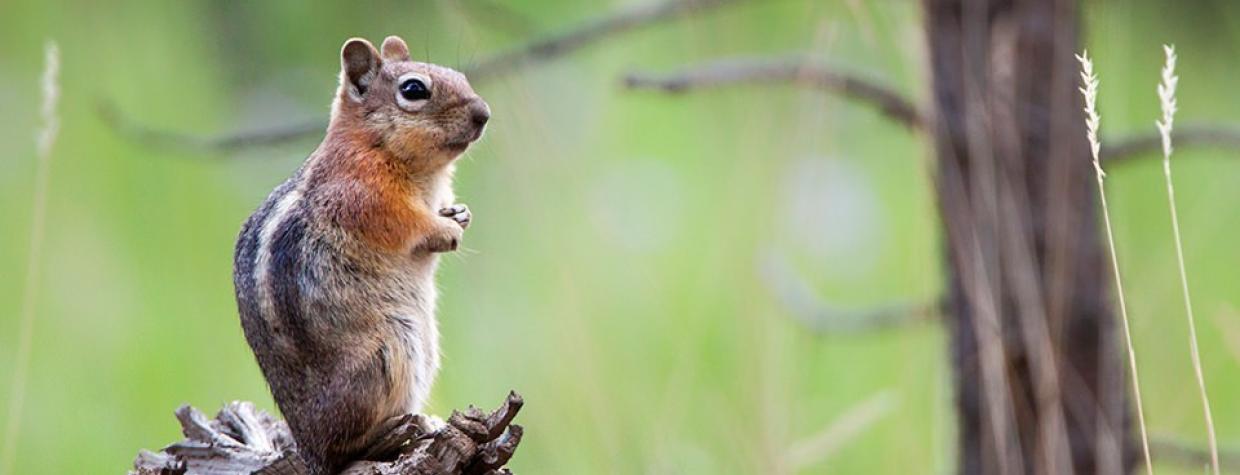Hikers and picnickers in Arizona are familiar with the golden-mantled ground squirrel, even though they may have thought they were looking at an oversized chipmunk. It’s an easy mistake to make. Both have black stripes running down their backs, and neither is shy about begging for a bite of your Clif Bar. The squirrel gets its name from the golden-brown “mantle” over its head and shoulders, and it cleans its brightly colored fur by rolling in the dust.
The species’ genus name is Greek for “seed-loving,” and seeds and fruit comprise the bulk of the squirrel’s diet. It’s also been known to eat fungi, insects, bird eggs and small vertebrates. Excluding those members that fill their days panhandling along popular hiking trails, ground squirrels live a fairly simple life: eat all summer, sleep all winter, wake up and breed in the spring, and repeat. Females produce a litter of about five, which they raise in an underground burrow.
Because the golden-mantled ground squirrel tends to remain in mountainous areas, it’s not considered an agricultural pest the way some other species of ground squirrel are. But anyone who’s stopped at the Agassiz Saddle for a snack, only to find themselves surrounded by a few of these hungry critters, might view them as pests of a different nature (albeit cute ones).
- Hall of Fame
- Explore
- Photography
- Shop
- Classroom
- Subscriptions

